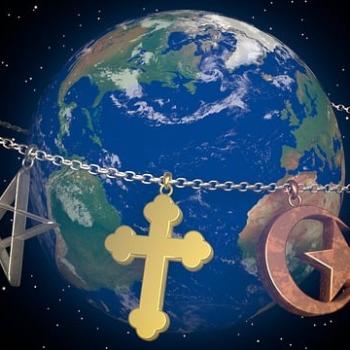Do we need to reform the calendar to eliminate anomalies like Leap Year?
Two Johns Hopkins professors, Steve Hanke (an economist and fellow of the libertarian Cato Institute) and Dick Henry (a physicist and astronomer), have been proposing the Hanke-Henry Permanent Calendar. It has the virtue of making every date fall on the same day each year. Christmas, December 25, will always be on a Monday. If your birthday is on a Saturday, it will always be on a Saturday.
There would be no leap year, no extra day every four years. What there will be to align the year with the earth’s orbit is a leap week every five or six years. This week will be added to the end of December. It will function like a month and will be known as Xtr, pronounced “extra” and would doubtless become a great festival.
See an explanation of the new calendar, which the inventors hope to begin in 2018, after the jump. The link will also take you to FAQs and the calendar itself. After the jump you will also find my critique of the whole project.
This strikes me as a solution to something that is not a problem. Instead of a leap day, we have a leap week. Is there any practical advantage to this calendar, other than not having to buy a new wall calendar every year? And isn’t it fun to have your birthday on different days? If it would fall on a weekend, fine, but mine would always be on a work day!
The inventors claim that since their calendar has a 7-day week, it would accord with the Sabbath commandments, but still, Easter and all other movable feasts would have to be recalculated, and we’d never get co-ordinated with the Jews or the Orthodox.
These are the same guys who are proposing the elimination of time zones. We’d all be on the equivalent of Greenwich mean time, and just go to work or go to bed at different times. Some in the world would go to work at 08:00, while others would quit work at that time and others would go to bed at that time. Imagine trying to do business or placing a call outside your area, not knowing if the person you are calling is working or sleeping. Furthermore, eliminating time zones cuts off the clock from its natural correlative, the day being the amount of time it takes for the earth to make a full revolution and local time being connected to the position of the sun in the sky.
It’s true that the calendar and the clock are human constructions, but time itself, as Einstein reminds us, is a dimension of nature. We should reinforce that connection rather than make time all about us.
From Hanke-Henry Permanent Calendar:
WHAT IS THE HANKE-HENRY PERMANENT CALENDAR?
The world did not come to an end on December 21, 2012, as the Mayan calendar had predicted. In 2012, news of Iran’s hyperinflation brought the solar Hijri calendar — used throughout Iran and Afghanistan — back into the news. And, every year, over a billion people around the world celebrate the Chinese Lunar New Year. Suffice to say, there are many calendars out there besides our familiar Gregorian calendar.
The Hanke-Henry Permanent Calendar provides a comprehensive revision of the contemporary Gregorian calendar. It adheres to the most basic tenant of a fixed (read: permanent) calendar: each year, each date falls on the same day of the week; in our case, every year begins on Sunday, January 1.
The year is then divided into four three-month quarters. Each month begins on the same day (and date) each year. The first two months of each quarter are made up of 30 days; the third is made up of 31 days. Each quarter contains the same number of days, which simplifies financial calculations; this methodology would have prevented Apple’s Q4 2012 accounting fiasco, for example.
So, each quarter contains 91 days, resulting in a 364-day year that is comprised of 52 seven-day weeks. This is a vital feature of the HHPC, because, by preserving the seven-day Sabbath cycle, the HHPC abides by the fourth commandment, thereby avoiding the major complaints from ecclesiastical quarters that have doomed all other attempts at calendar reform.
Moreover, the HHPC accounts for the disparity between the necessary length of our calendar (364 days) and the astronomical calendar (roughly 365.24 days, the duration of one full orbit of the Earth around the Sun) by simply tacking one additional full week to the end of every fifth or sixth year (specifically, 2015, 2020, 2026, 2032, 2037, 2043, 2048, and so on). This keeps the calendar in line with the seasons — serving the same function as does the leap year in the present system.
The multiplicity of calendars can be explained by a variety of scientific, cultural, economic, and religious factors. But, on a whole, it underscores the fact that no calendar has been able to fully address all of the issues associated with measuring and organizing the passing of time. The Hanke-Henry Permanent Calendar represents the most economically advantageous calendar reform to date.












